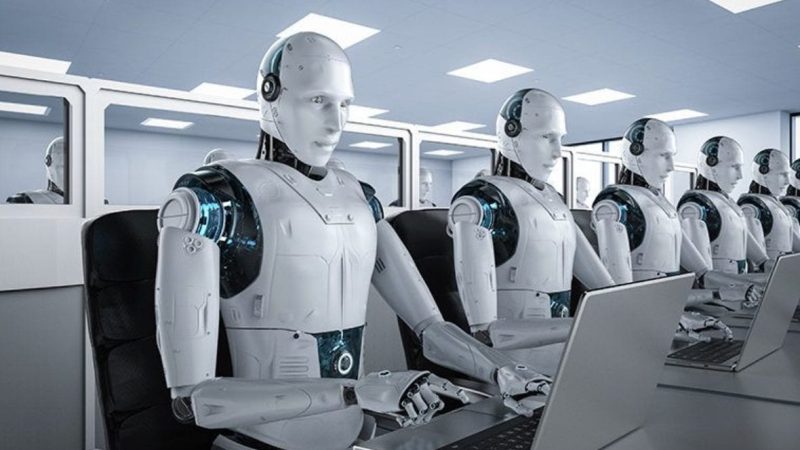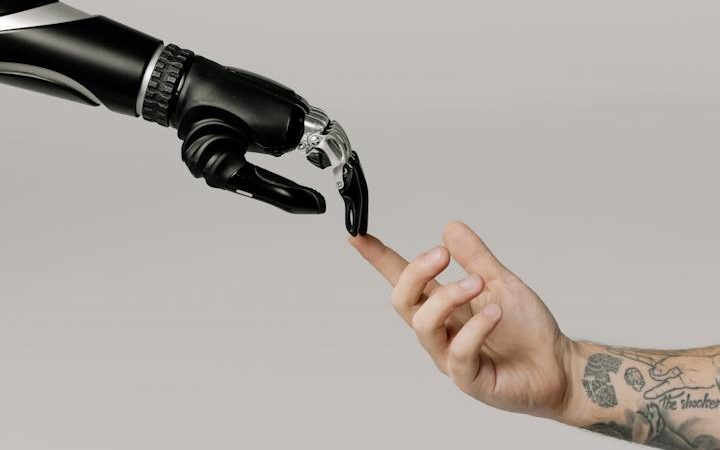How does AI work in the Aviation Industry?
In this sense, although the AI inside the planes is still in its earliest stages, you may soon be wondering why you don’t see the pilot in the cockpit. You may become an onboard flight control and communication systems supervisor with artificial intelligence technology. Future safety in the skies packed with aircraft requires the cockpit to be a true hub of intelligence and connectivity. Airplanes will need to “thread the needle” along their route between twice the number of commercial jets carrying three times more passengers than today.
On the other hand, the thousands of “air taxis” that will presumably be launched into the sky over cities and the RPAS operating in the same airspace will add new challenges to traffic control. All this must be coordinated with maximum security.
According to André Cléroux, Avionic Functions Product Line Director of Thales, for starters, in the short term, it will provide pilots with the keys to managing complexity, which means ensuring safety. If pilots face many simultaneous situations daily where they need to make critical decisions (to name just a few: from climate change to incidents with engines, hydraulic equipment, landing gear, or even a bird hitting the plane), With increased air traffic, smaller aircraft spacing and heavier workloads, they will have less time to react to events or incidents. Artificial intelligence will help them make the right decisions.
Also read: Artificial Intelligence used in financial services 2021
Table of Contents
Airports lead the way in AI employment
Under the umbrella of customer satisfaction and cost savings – mainly personnel – there are many AI and IoT (Internet of Things) solutions and applications that are being investigated, even already being used.
An analysis by SITA estimates that almost half of airports will adopt tools that use artificial intelligence over the next five to ten years. Another data is that while at the end of 2017, 9% of airports were already using chatbots (a computer program with which it is possible to have a conversation), forecasts indicate that by the end of 2020 42% of airports will adopt services of bots.
Since February 2018, Munich airport has been conducting tests in Terminal 2 with a humanoid robot equipped with artificial intelligence that attends and solves the doubts of passengers.
AI is also being applied (combined with other technologies such as biometric facial recognition and blockchain) for the identification of passengers and to eliminate the current requirement to carry multiple documents (passport, airline ticket, visa) during the trip, and this without passengers has to share their personal information with customs, airlines, and airports. In addition to measuring traffic and passenger movements through the different areas of the airport, so that the system can optimize the organization of the masses of people by itself (in the security control lines, for example). Another utility is to be able to adjust the temperature by zones inside the terminal depending on the density of the public and other variables, among other applications.
AI onboard the plane
Beyond improving the efficiency of processes and the passenger experience -sought for in airports-, the applications of artificial intelligence here acquire another dimension: optimizing security. Of course, in addition to the fundamental objective for both sectors: cost savings, which in the cabin will lead to the autonomous aircraft -without pilots on board-. But until reaching that level, AI research goes first to optimize the current automatic processes in flight, and secondly, to achieve greater integration between humans and machines in the cockpit.
André Cléroux from Thales states that “this is due to the role of digitization in ensuring safety on increasingly complex aircraft that fly in increasingly crowded skies.”
AI applications in aircraft
Artificial intelligence will help make autopilot more effective in emergencies, where people are still better than machines. It’s about AI learning how pilots react when an emergency happens.
It will also benefit from the way the aircraft maneuvers to its preventive maintenance in the cabin. And on the ground, taxiing and operations are now ready to be carried out through these new capabilities, although one of the biggest problems encountered relates to obstacles during take-off that are often not recorded at the bases.
But without a doubt, the applications that will make it possible to make the big leap, which will even make it possible to reach the autonomous plane, are in piloting and air traffic management. Cléroux explains: “Associated with the permanent connectivity of the aircraft, the artificial intelligence in the cabin will make it become a critical center in air traffic control, also automated. The AI will help in the separation tasks between aircraft and in avoiding collisions, in the latter case using systems that allow establishing processes between the aircraft – ships that “communicate” with each other without the intervention of a person – to see which one changes its route.
Conclusion
In short, artificial intelligence is already there and inevitably, along with the other three revolutionary technologies, will soon transform the air transport industry, taking it to the next level in which to avoid human error. As the knowledge and use of AI accelerates, we will likely see airplanes without pilots, or at least that the role of these in the transport of passengers evolves to another realm.






